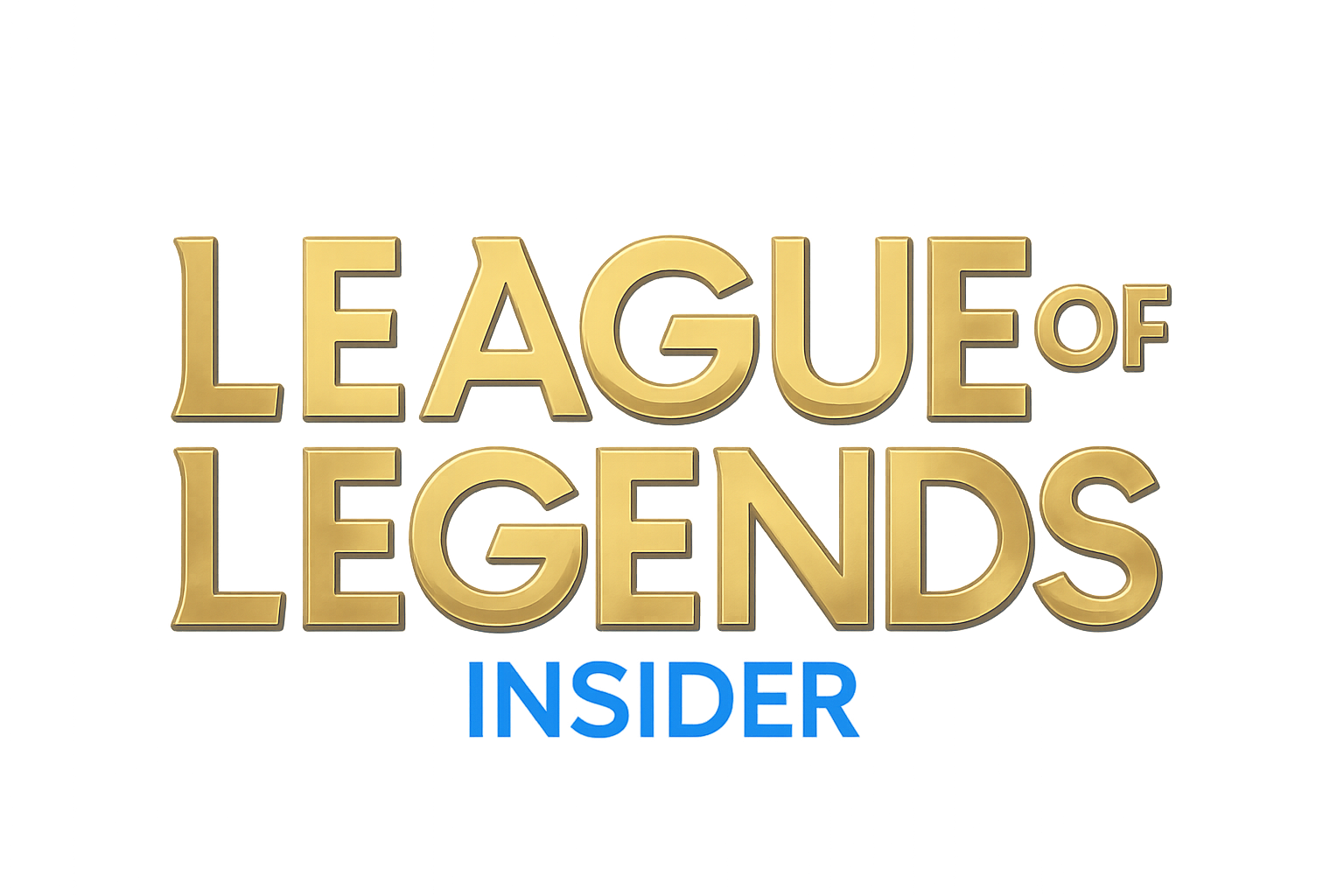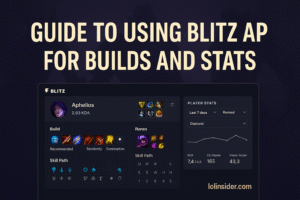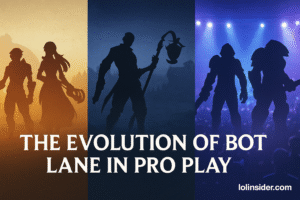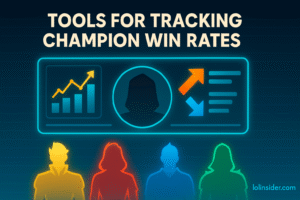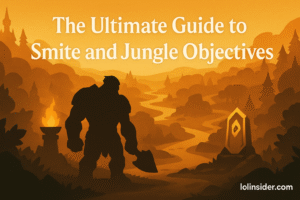LoL Guide: When to Group vs Split Push is one of the most important concepts in League of Legends strategy. Every game reaches a point where teams must decide: should we group together to siege or contest objectives, or should we send a champion to the side lane for a split push? This decision can make or break games at all levels of play, from Bronze solo queue to professional tournaments.
In this comprehensive guide, we’ll break down how grouping and split pushing work, the pros and cons of each, the champions best suited for these strategies, and how to read the game state to make the right call. By the end, you’ll have a deeper understanding of map movements, tempo, and win conditions, giving you the edge to climb the ranked ladder.
1. What Does Grouping Mean in LoL?
Grouping refers to multiple members of a team — often all five — moving together to apply pressure in a single area, typically mid lane or around an objective. The goal is to force fights, siege turrets, or secure neutral objectives like Dragon, Rift Herald, or Baron Nashor.
Pros of grouping:
- Strong teamfighting power.
- Safety in numbers, reducing risk of picks.
- Easier objective control.
- Clear win conditions for coordinated teams.
Cons of grouping:
- Less efficient gold and XP distribution.
- Vulnerable to cross-map pressure from split pushers.
- Requires coordination, which is difficult in solo queue.
2. What Is Split Pushing?
Split pushing is when one champion pressures a side lane while the rest of the team holds elsewhere. The idea is to force the enemy to respond, creating map pressure and opportunities.
Pros of split pushing:
- Maximizes gold and XP for the splitter.
- Creates map pressure and forces enemy rotations.
- Punishes teams with weak waveclear or poor macro.
- Opens opportunities to take turrets without fighting.
Cons of split pushing:
- Risk of getting collapsed on.
- Teammates may lose 4v5 fights.
- Requires excellent map awareness and communication.
3. The Strategic Importance of Grouping
Grouping becomes critical when your team composition revolves around teamfighting. For example, if your draft includes champions like Amumu, Orianna, and Miss Fortune, your win condition is landing massive AoE combos in grouped fights.
Grouping is also essential:
- Before major objectives (Dragon Soul, Baron).
- When you’re ahead and want to force fights.
- To protect weak side laners who would otherwise get collapsed on.
4. The Strategic Importance of Split Pushing
Split pushing shines when your team has strong 1v1 or dueling champions such as Fiora, Jax, Tryndamere, or Camille. These champions thrive in side lanes, drawing enemy resources and creating space.
Split pushing is often optimal:
- When your team is behind and grouping would mean losing teamfights.
- If you have Teleport advantage for cross-map pressure.
- Against immobile comps that can’t catch side laners quickly.
5. Champions That Excel at Grouping
Certain champions are designed to thrive in grouped fights:
- Amumu, Malphite, Sejuani (engage tanks).
- Orianna, Viktor, Syndra (AoE control mages).
- Miss Fortune, Kai’Sa, Samira (AoE damage ADCs).
- Rakan, Leona, Alistar (teamfighting supports).
These champions maximize their value in 5v5 fights rather than isolated skirmishes.
6. Champions That Excel at Split Pushing
Split pushers usually combine dueling power with tower-taking ability:
- Fiora, Jax, Camille, Tryndamere (duelists).
- Nasus, Yorick, Trundle (tower crushers).
- Twisted Fate, Shen (global ultimate threats).
The best split pushers can duel almost anyone sent to stop them while applying tower pressure.
7. Key Map Timings for Grouping vs Splitting
- Early Game (0–14 mins): Lanes are isolated. Grouping happens mostly for Rift Herald. Split pushing isn’t viable yet because plates are still up and laners are weaker.
- Mid Game (15–25 mins): Decision point. Champions hit power spikes. Grouping is critical for Dragons and teamfights, while split pushers begin threatening turrets.
- Late Game (25+ mins): Split pushing can win games if inhibitors are exposed. However, one lost teamfight can end the game, so grouping becomes higher risk but higher reward.
8. Objectives and Their Role in the Decision
Objectives dictate whether to group or split:
- Dragon Soul: Always group; it’s a win condition.
- Baron Nashor: Group or play 1-3-1 with vision to avoid being rushed.
- Rift Herald: Early skirmishes; grouping is useful.
- Turrets: Split pushing is the best way to chip away at side towers.
9. Reading Enemy Win Conditions
Ask yourself: what does the enemy team want? If they’re a wombo-combo comp, don’t group into them. If they’re weak against split push, send your duelist to side lane. Countering the enemy’s win condition is as important as executing your own.
10. Solo Queue vs Pro Play: Different Dynamics
In solo queue, grouping is often more reliable because random teammates rarely coordinate split push timings. In pro play, however, split pushing is far more effective thanks to communication, vision control, and map awareness.
11. How to Shotcall for Grouping
- Ping objectives early.
- Spam “group” pings before Dragon/Baron.
- Type quick reminders in chat (“group for soul”).
- Encourage vision setup so grouping is safer.
12. How to Shotcall for a Split Push
- Communicate clearly (“I split bot with TP, don’t fight”).
- Track enemy Teleports.
- Force 4v4 or 4v3 while you push.
- Push waves at the same time as your team pressures mid.
13. Common Mistakes with Grouping
- Grouping too early (before objectives).
- Standing in side lanes alone and dying before grouping.
- Forcing fights when behind instead of trading cross-map.
14. Common Mistakes with Split Pushing
- Overstaying without vision.
- Splitting when major objectives are up.
- Expecting teammates to win 4v5 fights consistently.
15. Hybrid Strategies: 1-3-1 and 1-4 Setups
Not all games are binary. Pro teams often use hybrid lane setups:
- 1-3-1: Two split pushers in side lanes, three mid.
- 1-4: One split pusher side, four grouped mid.
These setups combine pressure with safety, but require synchronization.
16. Wave Management in Split Push
A split push is only effective if the waves are synced. Push side waves at the same time your team pressures mid, so the enemy is forced to respond to multiple threats simultaneously.
17. Vision Control While Splitting or Grouping
Control wards and sweepers are essential:
- When grouping: Establish vision around objectives.
- When splitting: Deep wards to track enemy rotations.
Without vision, both strategies fail.
18. Adapting to Champion Scaling
Scaling is critical:
- If your team outscales, group to stall and fight later.
- If your team is early-game focused, split to delay and trade.
- Match your strategy to scaling curves.
19. Psychological Pressure of Split Push
Split pushing adds mental strain on enemies. They must decide: defend the pusher or contest objectives? This pressure leads to mistakes, especially in solo queue.
20. Putting It All Together: Decision-Making Framework
When deciding between grouping or splitting, ask:
- What is our comp good at?
- What objectives are spawning?
- Who has Teleport advantage?
- Who wins in side lane 1v1?
- What does the enemy team want?
Answering these gives you a clear call.
21. FAQs
Q: Should I always group after 20 minutes?
A: No. If you have a strong split pusher with TP and vision, side lane pressure can still be superior.
Q: Can ADCs split push?
A: Rarely. They are too vulnerable unless massively ahead. Split pushing is best for duelists.
Q: How do I stop my team from inting 4v5 while I split?
A: Communicate clearly and time your split with objectives. If they fight anyway, consider grouping instead.
Q: Is split pushing viable in low elo?
A: It’s harder, but it works if you ward properly and track the map. Grouping is generally safer for climbing.
Conclusion
The eternal question in League of Legends macro play is whether to group or split push. Both strategies have clear strengths and weaknesses, and the right choice depends on your composition, the game state, and upcoming objectives. By mastering this decision, you’ll not only win more games but also understand the game at a deeper strategic level.
